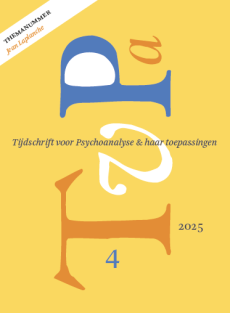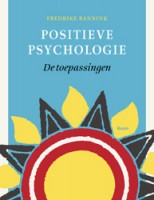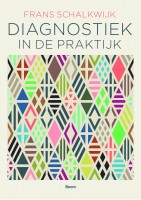De analyticus als ‹desillusionist›
Summary
The analyst as ‹disillusionist›
In the author’s view psychoanalysis can be understood as a psychology of disillusionment. A significant part of our lives consists of freeing ourselves from illusions. This is a difficult and painful undertaking, particularly for those patients who find themselves imprisoned in implicit relational patterns. It is especially in this area that psychoanalysis can sometimes provide an important contribution in assisting patients to become sufficiently disillusioned.
Literatuur
- Clyman, R.B. (1991). The procedural organization of emotions – A contribution from cognitive science to the psychoanalytic theory of therapeutic action. Journal of the American Psychoanalytic Association, 39, suppl., 349-382.
- Dunn, P.B. (2007). The clinical implications of an integrative theory – Commentary on Fonagy and Target. Journal of the American Psychoanalytic Association, 55, 479-484.
- Fonagy, P. & Target, M. (2007). The rooting of the mind in the body – New links between attachment theory and psychoanalytic thought. Journal of the American Psychoanalytic Association, 55, 411-456.
- Fonagy, P.E.A. (2002). Affect regulation, mentalization, and the development of the self. New York: Other Press.
- Friedman, L. (2005a). Psychoanalytic treatment: thick soup or thin gruel? Psychoanalytic Inquiry, 25, 418-439.
- Friedman, L. (2005b). Flirting with virtual reality. Psychoanalytic Quarterly, 74, 639-660.
- Harris, S. (2006). In J. Brockman (red.), What we believe but cannot prove (p. 51-52). New York: Harper.
- Hazan, C. & Zeifman, D. (1999). Pair bonds as attachment – Evaluating the evidence. In J. Cassidy & P. R. Shaver, Handbook of attachment (p. 336-354). New York: The Guilford Press.
- Ladan, A. (2000). Het wandelend hoofd – Over de geheime fantasie een uitzondering te zijn. Amsterdam: Boom (tweede druk 2003).
- Ladan, A. (2005). Over vreemde liefde en liefde voor het vreemde. Tijdschrift voor Psychoanalyse, 11, 50-61.
- Milton, J. (2001). Psychoanalysis and cognitive behaviour therapy – Rival paradigms or common ground? International Journal of Psychoanalysis, 82, 431-447.
- Target, M. (2005). Attachment theory and research. In E. S. Person, A. M. Cooper, G. O. Gabbard (red.), Textbook of psychoanalysis (p. 159 -172). Washington: American Psychiatric Publishing, Inc.
 © 2009-2025 Uitgeverij Boom Amsterdam
© 2009-2025 Uitgeverij Boom Amsterdam
ISSN 1382-516x
De artikelen uit de (online)tijdschriften van Uitgeverij Boom zijn auteursrechtelijk beschermd. U kunt er natuurlijk uit citeren (voorzien van een bronvermelding) maar voor reproductie in welke vorm dan ook moet toestemming aan de uitgever worden gevraagd:
Behoudens de in of krachtens de Auteurswet van 1912 gestelde uitzonderingen mag niets uit deze uitgave worden verveelvoudigd, opgeslagen in een geautomatiseerd gegevensbestand, of openbaar gemaakt, in enige vorm of op enige wijze, hetzij elektronisch, mechanisch door fotokopieën, opnamen of enig andere manier, zonder voorafgaande schriftelijke toestemming van de uitgever.
Voor zover het maken van kopieën uit deze uitgave is toegestaan op grond van artikelen 16h t/m 16m Auteurswet 1912 jo. Besluit van 27 november 2002, Stb 575, dient men de daarvoor wettelijk verschuldigde vergoeding te voldoen aan de Stichting Reprorecht te Hoofddorp (postbus 3060, 2130 KB, www.reprorecht.nl) of contact op te nemen met de uitgever voor het treffen van een rechtstreekse regeling in de zin van art. 16l, vijfde lid, Auteurswet 1912.
Voor het overnemen van gedeelte(n) uit deze uitgave in bloemlezingen, readers en andere compilatiewerken (artikel 16, Auteurswet 1912) kan men zich wenden tot de Stichting PRO (Stichting Publicatie- en Reproductierechten, postbus 3060, 2130 KB Hoofddorp, www.cedar.nl/pro).
No part of this book may be reproduced in any way whatsoever without the written permission of the publisher.
Nieuwsbrief Boom Psychologie
Meld u nu aan en ontvang maandelijks de Boom Psychologie nieuwsbrief met aantrekkelijke aanbiedingen en de nieuwe uitgaven.
Aanmelden


